Royal Garden Ideas for a Majestic Outdoor Space
Transforming your garden into a royal oasis can be a delightful and rewarding experience. With a few thoughtful tweaks, you can bring the elegance and charm of historic royal gardens to your own backyard. Imagine strolling through your garden, surrounded by beautifully arranged flowers and classic design elements that echo the grandeur of royal estates.
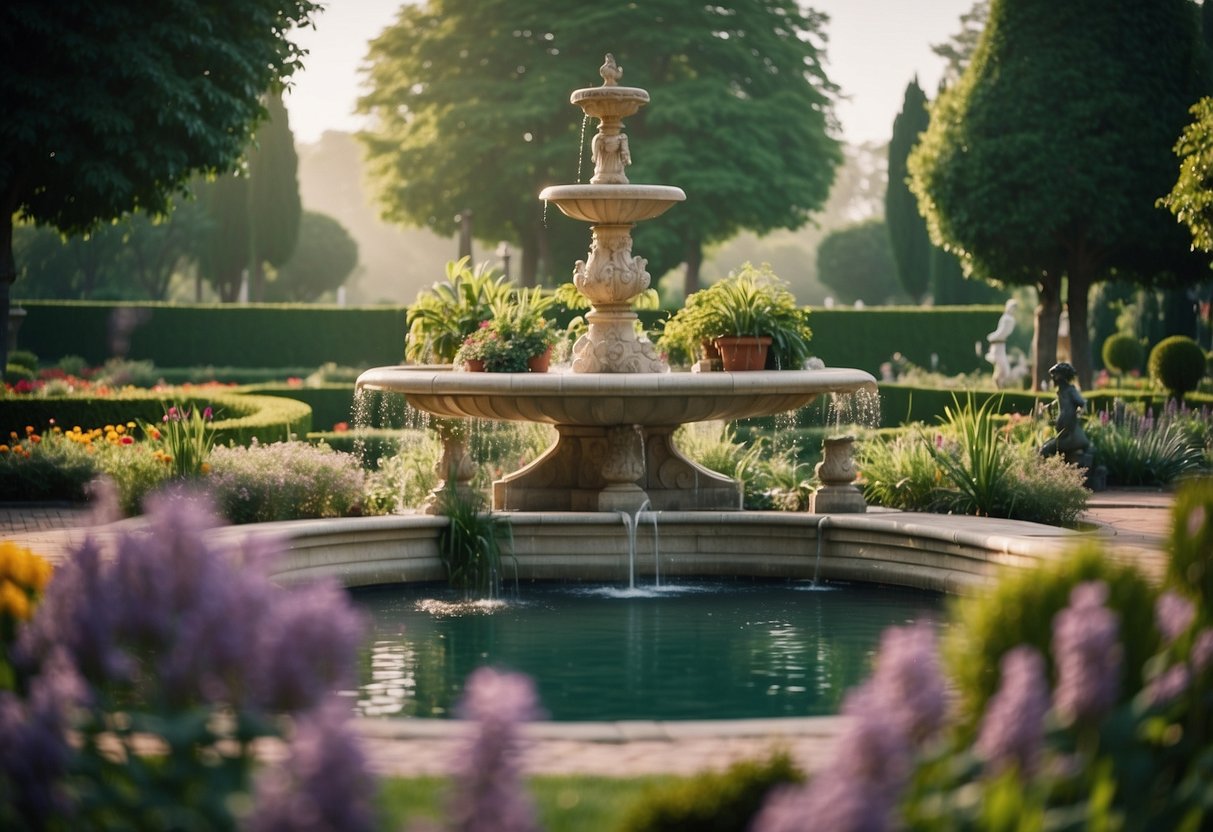
Whether you’re inspired by the fragrant blooms at Buckingham Palace or the geometric patterns at Windsor Castle, the timeless appeal of these regal spaces can be recreated in your garden. By incorporating a few key ideas, you’ll be well on your way to creating a serene and stately outdoor retreat.
1) Rose Pergola

A rose pergola brings beauty and elegance to any garden. Picture roses climbing up and around a wooden structure, creating a stunning canopy of flowers.
To achieve this look, choose climbing roses such as “Gertrude Jekyll” or “New Dawn.” These roses are known for their strong scent and beautiful blooms.
With proper care and maintenance, your rose pergola will be the centerpiece of your garden, offering color and fragrance throughout the growing season. For more ideas, check out rose-covered pergola inspirations.
2) Lavender Pathways
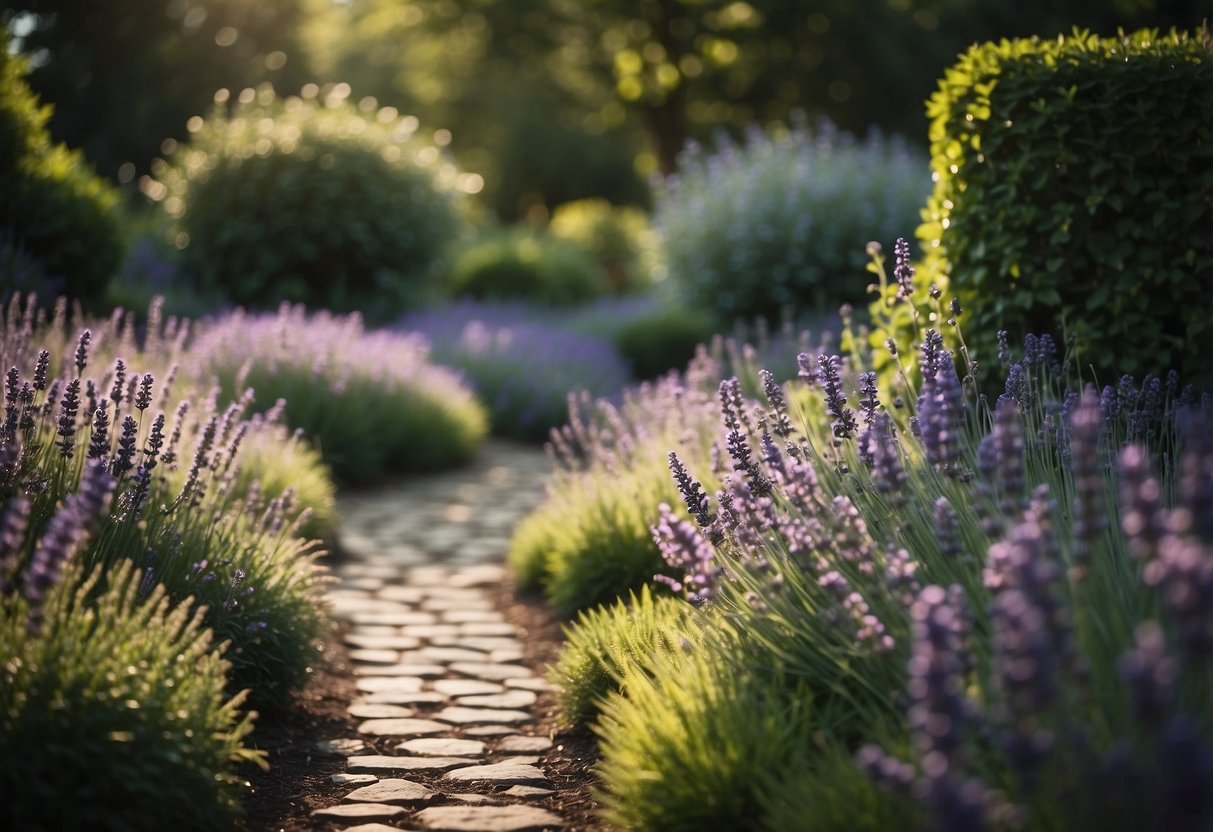
Lavender pathways can add a delightful touch to your garden. The purple blooms create a stunning visual along walkways, making every stroll a pleasant experience.
Using French lavender or the ‘Royal Purple’ variety ensures tall and eye-catching borders. These plants thrive in sunlight and can provide a neat, professional finish to your garden paths.
Symmetrical planting on both sides of the path enhances the beauty and offers a charming, balanced look. For a unique touch, consider adding lavender under trees for a layered effect.
3) Sunken Garden

A sunken garden can add a touch of uniqueness to your royal-inspired space. This type of garden is lower than the surrounding area, creating a cozy, intimate feel.
Inspiration can be found in places like Kensington Palace’s Redesigned Sunken Garden, which features over 4,000 individual flowers.
Consider adding features like dry stone walls and private seating areas, similar to some beautiful designs on Houzz. These elements can make your garden feel like a secluded retreat.
4) Herbaceous Borders

A herbaceous border is a classic feature in many royal gardens. This type of border showcases a variety of plants that return each year but die back in winter.
Herbaceous borders were popularized in the UK during the 19th century and remain a beloved garden element today.
Inspiration can come from places like Buckingham Palace gardens, where the herbaceous border stretches an impressive 511 feet.
Creating your own herbaceous border allows for a stunning array of colors and textures in your garden, making it burst with life and interest throughout the growing season.
5) Topiary Mazes
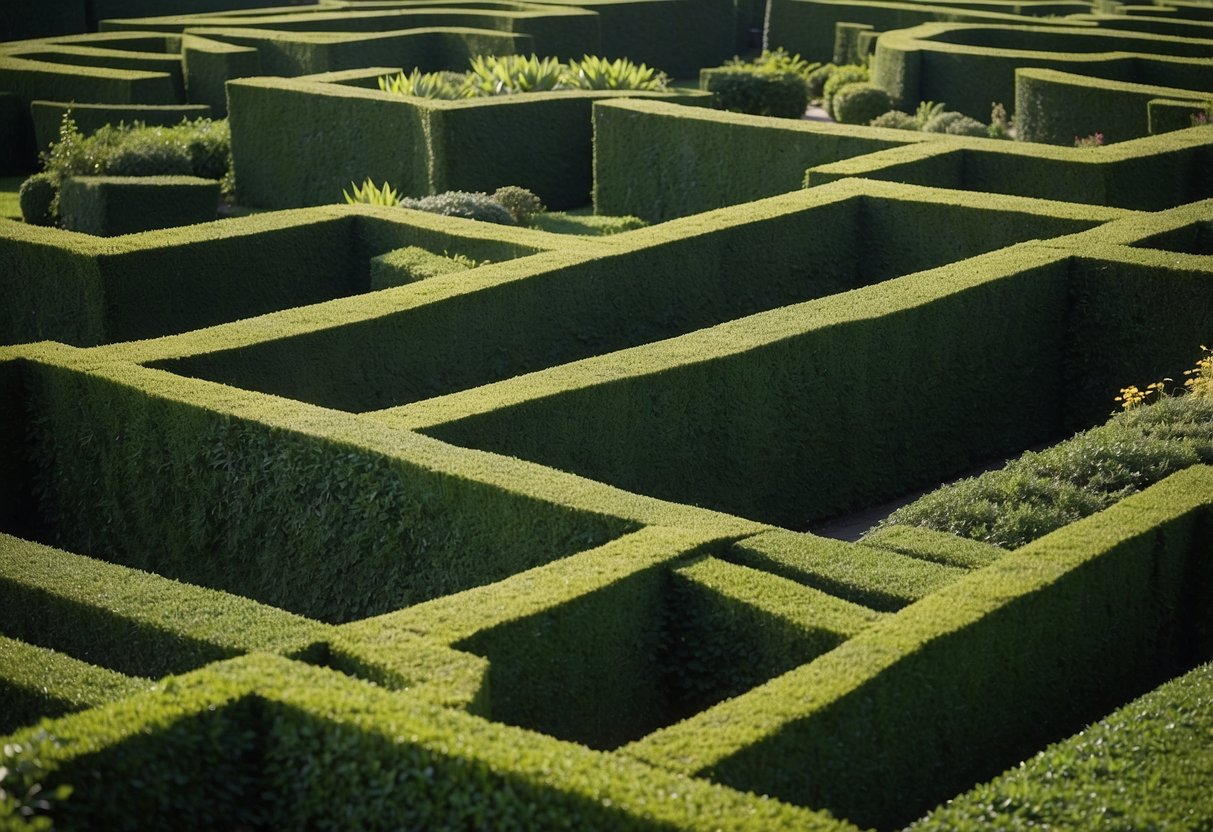
Imagine wandering through a maze with walls made of beautifully trimmed evergreen plants. Topiary mazes are both fun and visually stunning. These mazes can be small and simple or large enough to get lost in.
Creating a topiary maze in your garden adds a touch of elegance and mystery. The neatly clipped plants create a magical atmosphere that feels timeless.
Adding statues or garden benches inside the maze can offer delightful surprises as you navigate your way through. For inspiration, you can explore various designs and find the perfect style for your garden.
6) Ornamental Fountains
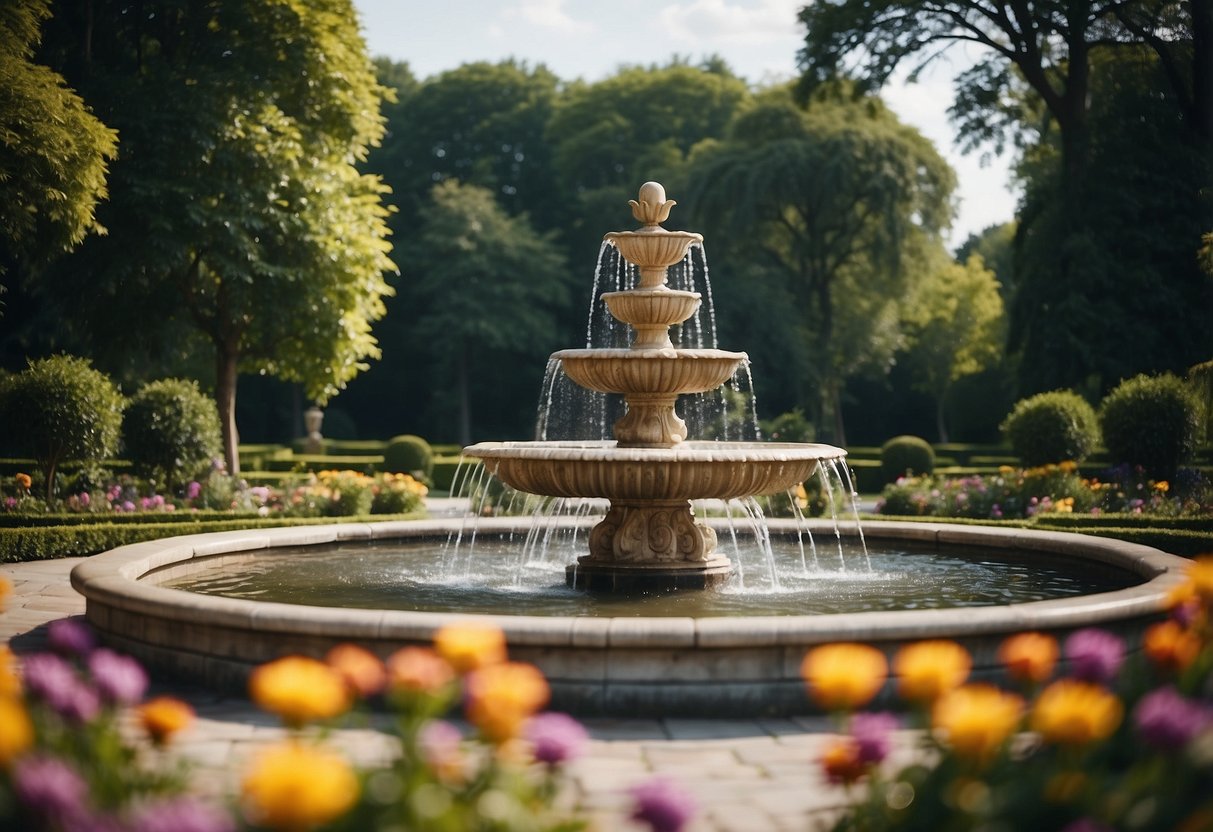
Ornamental fountains can add a touch of elegance to your royal garden. They come in many styles and materials, creating a focal point and adding a soothing sound of flowing water.
Consider a classical tiered fountain surrounded by hedges for a timeless look. Another option is a fountain with intricate carvings and lavish flower beds, like those seen in historic gardens.
For a Victorian appeal, use a weathered metal statue fountain surrounded by symmetrical plantings. This creates a balanced and serene environment.
7) Garden Folly Structures

Garden follies add whimsical charm to your yard. These structures often mimic larger buildings like castles or ancient ruins, but on a smaller scale.
You can use garden follies to hide unsightly features, like sheds or compost heaps. They can also serve as eye-catching focal points. They provide an interesting and playful element to your garden design.
Many famous English gardens feature stunning follies. At Kew Gardens, for example, you’ll find structures like the Great Pagoda. These follies don’t usually serve a functional purpose, making them perfect for purely aesthetic enjoyment.
8) Victorian Glasshouse
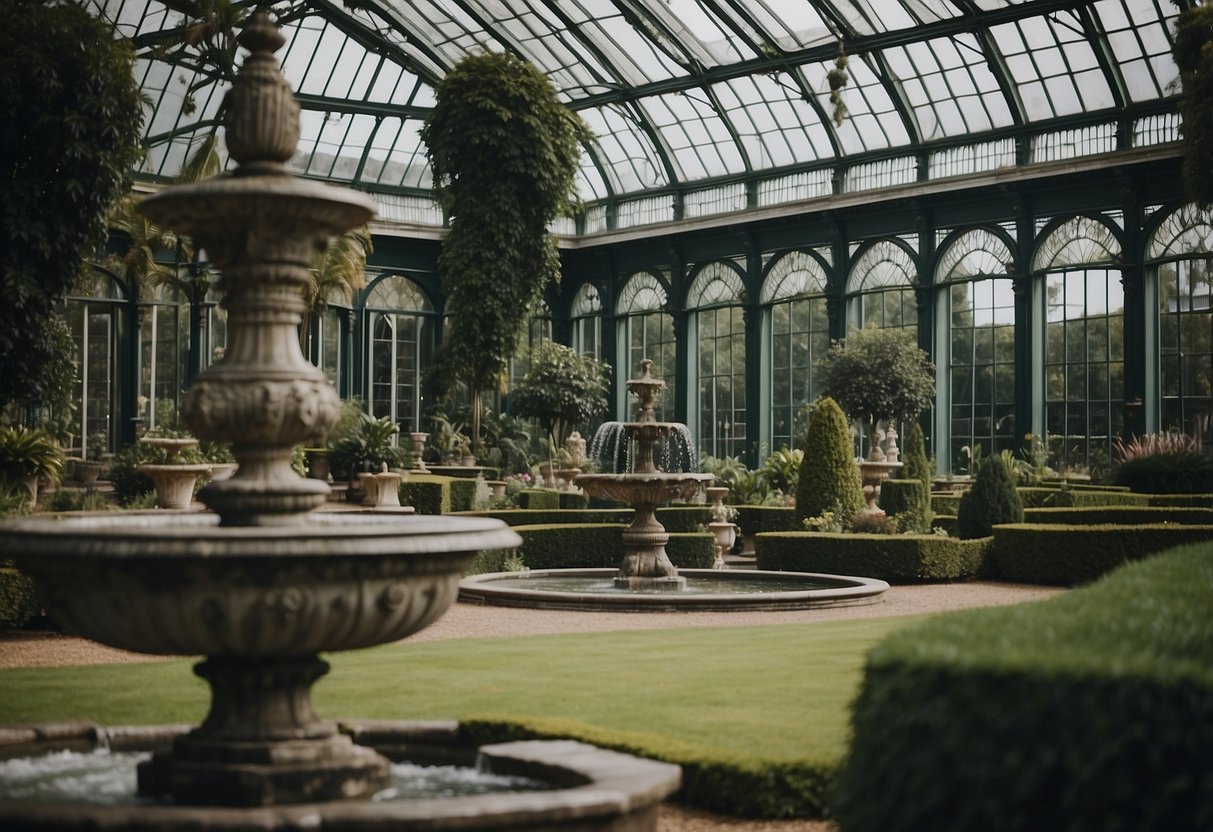
Victorian glasshouses add a touch of elegance to your garden. They combine intricate ironwork and beautiful glass. These structures create a perfect space for growing various plants.
You can find designs that blend Victorian aesthetics with modern functionality. This blend makes them both charming and practical.
For inspiration, explore some timeless Victorian greenhouses. They offer a glimpse into how you can transform your backyard. The detailed designs make any garden feel like a royal retreat.
9) Clipped Box Hedges
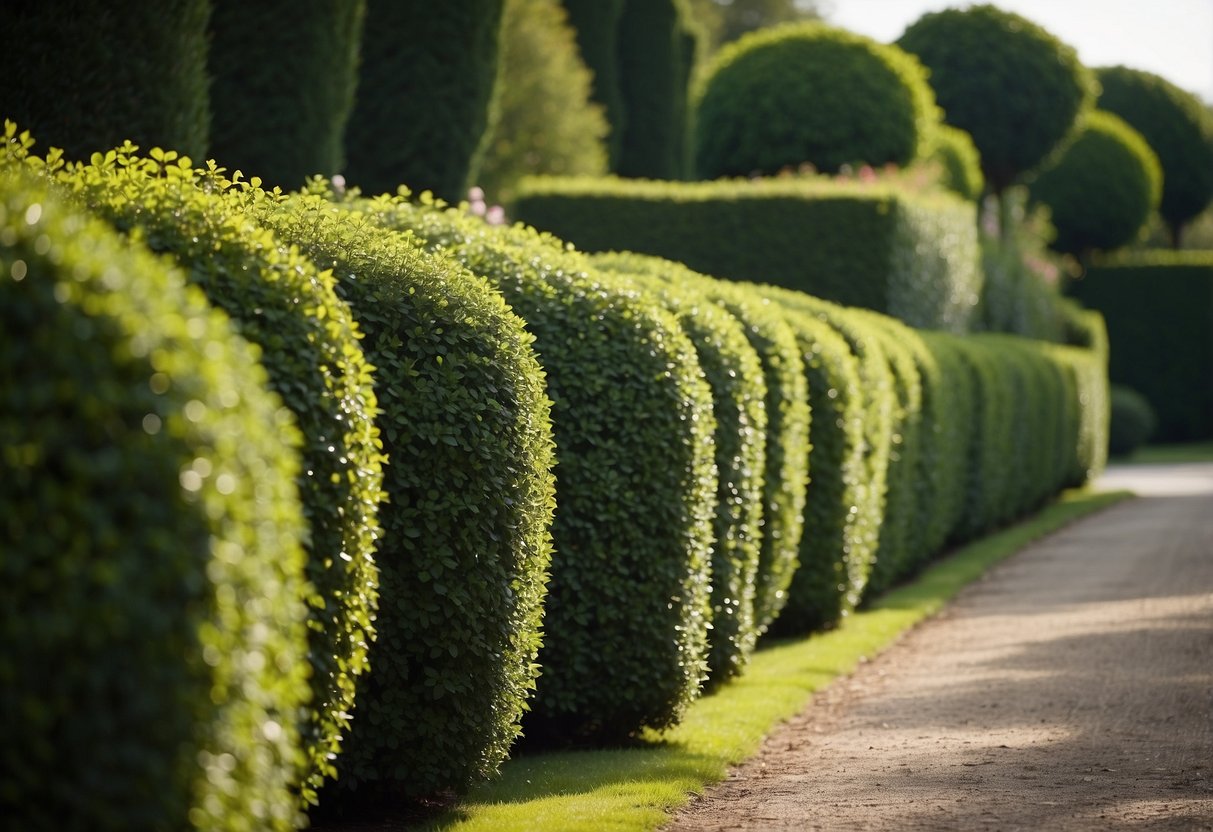
Clipped box hedges are a classic choice for royal gardens. They add elegance and structure to your landscape. You can shape them into neat, crisp lines for a formal look.
Box hedges can frame paths, doorways, and garden beds beautifully. They require minimal maintenance, needing only occasional trimming to keep their shape. Using boxwood balls to flank hardscaping elements can also enhance your garden’s visual appeal.
10) Seasonal Flower Beds

Creating seasonal flower beds can keep your garden vibrant all year. Focus on plants that bloom in different seasons. For example, perennials like elderberry provide yearly color and structure.
You can also use bunching grasses such as little bluestem for low-maintenance beauty. Another idea is to use unique elements like tractor tires, which can give your flower beds a distinctive look. For more ideas, check out this flower bed guide.
Design Principles for a Royal Garden
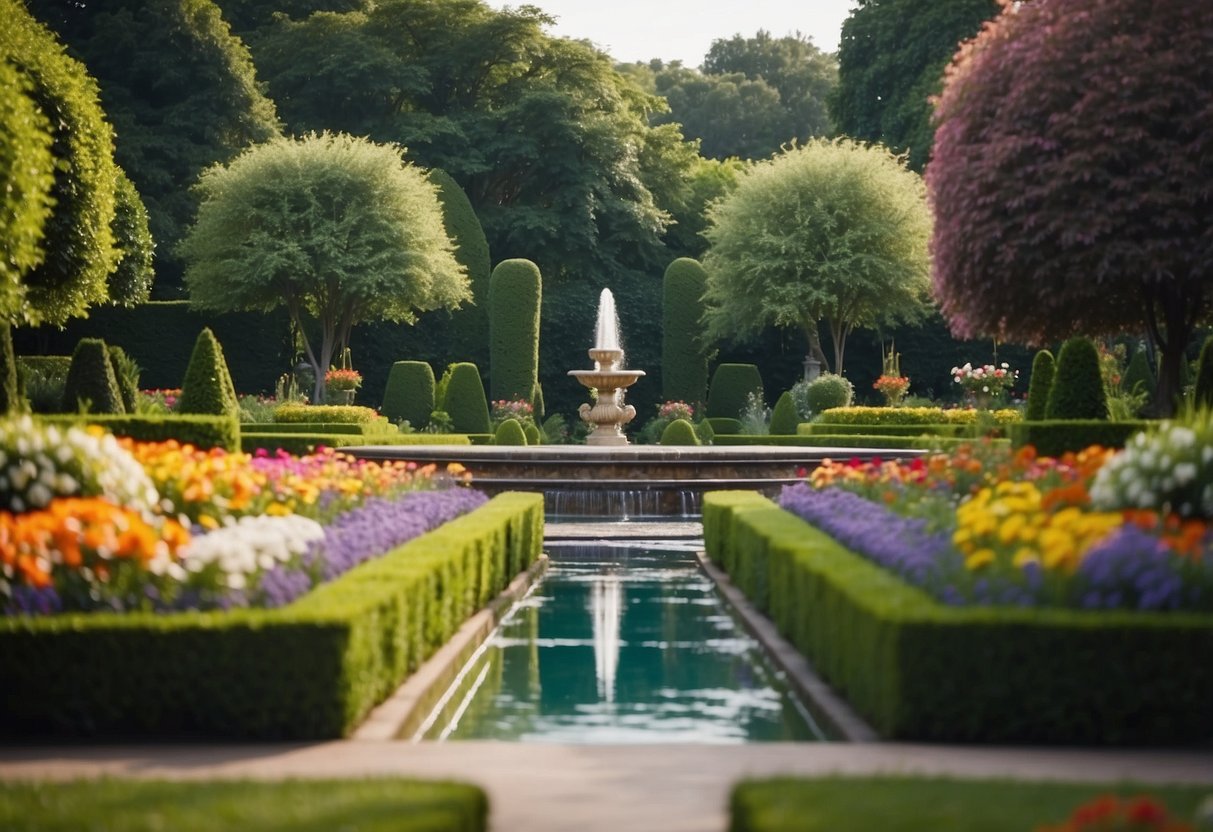
Creating a royal garden involves focusing on symmetry, balanced color schemes, and well-planned pathways. These elements make the space both beautiful and timeless.
Symmetry and Balance
Symmetry is key in a royal garden. Arrange plants, statues, and other garden features so they mirror each other on either side of a central path or fountain. This creates a sense of order.
Balance doesn’t require perfect symmetry. You can balance a large tree on one side with a couple of smaller trees and a bench on the other. The goal is to create visual harmony.
Hedges are often used in royal gardens to enhance symmetry. Tall, trimmed hedges can line pathways or encircle flower beds, creating a structured look.
Color Schemes
Color plays a major role in the appearance of a royal garden. Traditional royal gardens often use a mix of subdued colors like whites, greens, and soft pastels.
You can also include vibrant colors. For example, the Queen’s favorite flower, Lily of the Valley, adds a sweet fragrance and a splash of white. Mix these with pink and yellow roses, much like those found at Buckingham Palace Gardens.
Use color strategically. Designate certain areas of your garden for cool colors (like blues and purples) and others for warm colors (like reds and yellows). This keeps the garden visually interesting.
Garden Pathways
Pathways guide visitors through your garden and can highlight its best features. Use materials like gravel, brick, or stone to create durable and attractive paths.
Pathways in royal gardens are often wide and straight for a formal look. Create winding paths in less formal areas for a touch of whimsy.
Add features along pathways. Benches, statues, and small fountains provide spots for rest and add visual interest. Lining paths with flowers or low hedges can also enhance their beauty.
Creating a royal garden involves both art and planning. Focus on symmetry and balance, use thoughtful color schemes, and design inviting pathways to achieve a truly majestic garden.
Elements of a Royal Garden
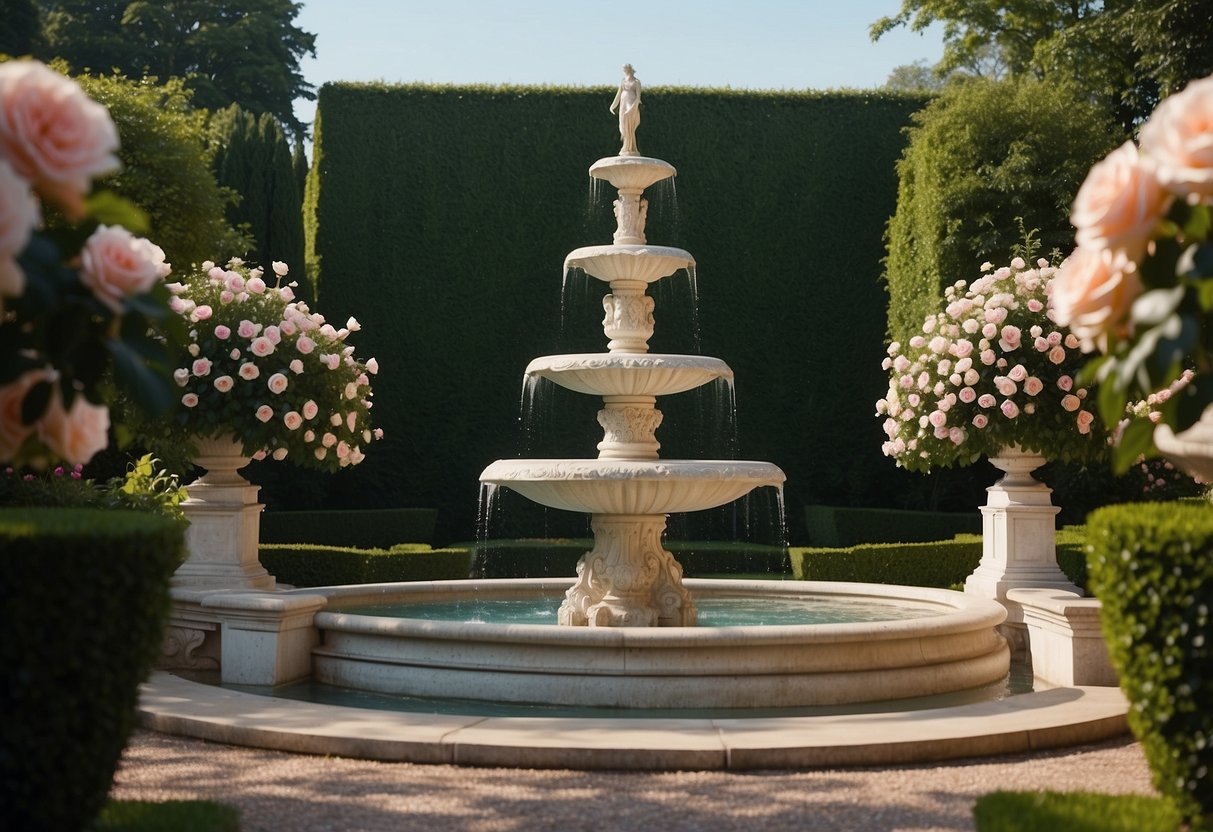
When designing a royal garden, certain elements bring a touch of elegance and grandeur. Think about including water features, statues, and exotic plants to create a majestic space.
Fountains and Water Features
Fountains and water features add a sense of calm with the soothing sound of flowing water. They often serve as the focal point of a royal garden. The Pond Gardens at Hampton Court Palace are an excellent example, featuring pond gardens designed for viewing from above. Fountains often appear in the center of flower beds or along walking paths, creating reflections and adding a cooling effect in the warm months. You might see ornate designs with classical influences, including statues or tiered cascades.
Statues and Sculptures
Statues and sculptures bring history and culture to your garden. They can be grand and imposing or subtle and elegant. The Rosenborg Castle Gardens in Denmark, for example, feature many classical sculptures that enhance the garden’s historic charm. You might choose marble figures from mythology, stone animals, or even modern art pieces that play with light and shadow. Positioning statues at the end of pathways or within groves invites exploration and discovery, offering delightful surprises as you stroll through the garden.
Exotic Plant Species
Exotic plants set royal gardens apart from regular ones. Many royal gardens include unique species not commonly found in home gardens. For example, the British royal family’s gardens boast lush climbing English ivy and vibrant roses. Try incorporating unusual orchids, rare lilies, or tropical palms. The key is to provide variety and color year-round, ensuring there’s always something blooming or lush to catch the eye. Exotic plants can be displayed in beds, along trellises, or in ornate pots placed strategically around the garden to draw attention.







